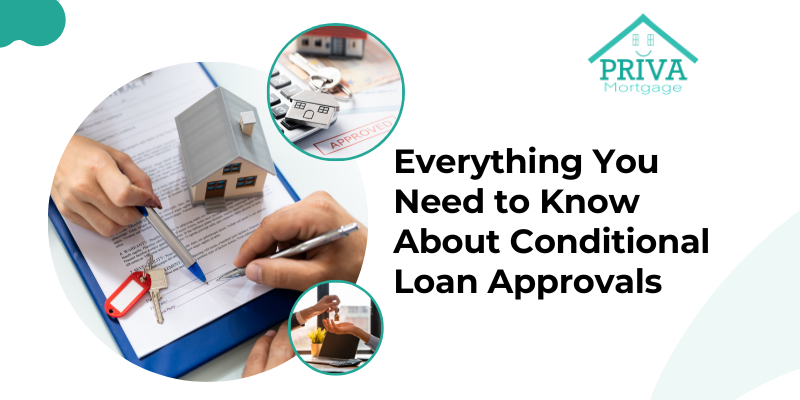Buying a home is an exciting and significant milestone, but navigating the loan approval process can be daunting. Understanding the concept of conditional loan approval is crucial for homebuyers, as it is a pivotal step in securing a mortgage. This comprehensive guide will delve into the intricacies of conditional loan approval, explore the different types of mortgage loan approvals, and provide insights into the timeline involved in closing the deal. By the end of this article, you will clearly understand what conditional approval entails and how it impacts your home-buying journey.
What is Conditional Loan Approval?
Conditional loan approval is a stage in the loan application process where the lender grants approval to meet specific requirements and conditions. These conditions typically revolve around documentation, income verification, property appraisal, and other factors influencing the lender’s decision to proceed with the loan. It is important to note that conditional approval is not a final commitment from the lender but an indication of their willingness to proceed with the loan subject to the satisfaction of the stated conditions.
Knowing the Common Loan Approval Process
To better grasp the significance of conditional approval, it is essential to understand the broader loan approval process. The journey typically involves several stages, each serving a unique purpose and requirement. These stages include prequalification, pre-approval, unconditional approval, and closing the loan.
Prequalification – Prequalification Process
Prequalification is the initial step in the loan approval process. It involves providing basic financial information to the lender, who then assesses your potential eligibility for a loan. During prequalification, the lender evaluates factors such as your income, debts, credit score, and employment history to provide you with an estimate of the loan amount you may qualify for. It is important to note that prequalification is an informal process and does not carry the same weight as pre-approval.
Pre-approval Process
Pre-approval takes the prequalification process a step further. It involves a more comprehensive evaluation of your financial situation, including income verification, credit check, and a thorough review of your assets and liabilities. During pre-approval, the lender may request additional documentation, such as bank statements, tax returns, and pay stubs, to assess your creditworthiness and loan repayment ability. Pre-approval provides a more accurate estimate of the loan amount you can secure and strengthens your position as a serious buyer in the eyes of sellers.
Unconditional Approval Process
Unconditional or full approval is the final stage of loan approval. At this point, the lender has thoroughly assessed your financial situation, property appraisal, and any additional conditions specified in the loan agreement. Upon unconditional approval, the lender is committed to providing you with the loan, pending fulfillment any outstanding conditions. It is essential to carefully review the terms and conditions of the loan agreement at this stage and seek clarification from the lender if needed.
How Long Does It Take to Close After Conditional Approval?
The timeline for closing a loan after receiving conditional approval can vary depending on several factors. These factors include the transaction’s complexity, the parties’ responsiveness, and any potential delays encountered along the way. On average, it can take a few weeks to a couple of months to close the loan after receiving conditional approval. However, it is essential to note that this timeline is subject to change and can be influenced by various factors. To ensure a smooth and timely closing process, it is crucial to maintain open communication with your lender, promptly provide any requested documentation, and address any outstanding conditions as soon as possible.
Conclusion
Conditional loan approval is a critical milestone on the path to homeownership. Homebuyers can navigate the process more effectively by understanding the loan approval process, including prequalification, pre-approval, unconditional approval, and the timeline involved. Staying proactive, maintaining open communication with your lender, promptly fulfilling any conditions, and seeking professional guidance is crucial. Remember, each step in the loan approval process serves a purpose and brings you closer to achieving your dream of homeownership. With this knowledge, you can confidently embark on your journey to homeownership.







